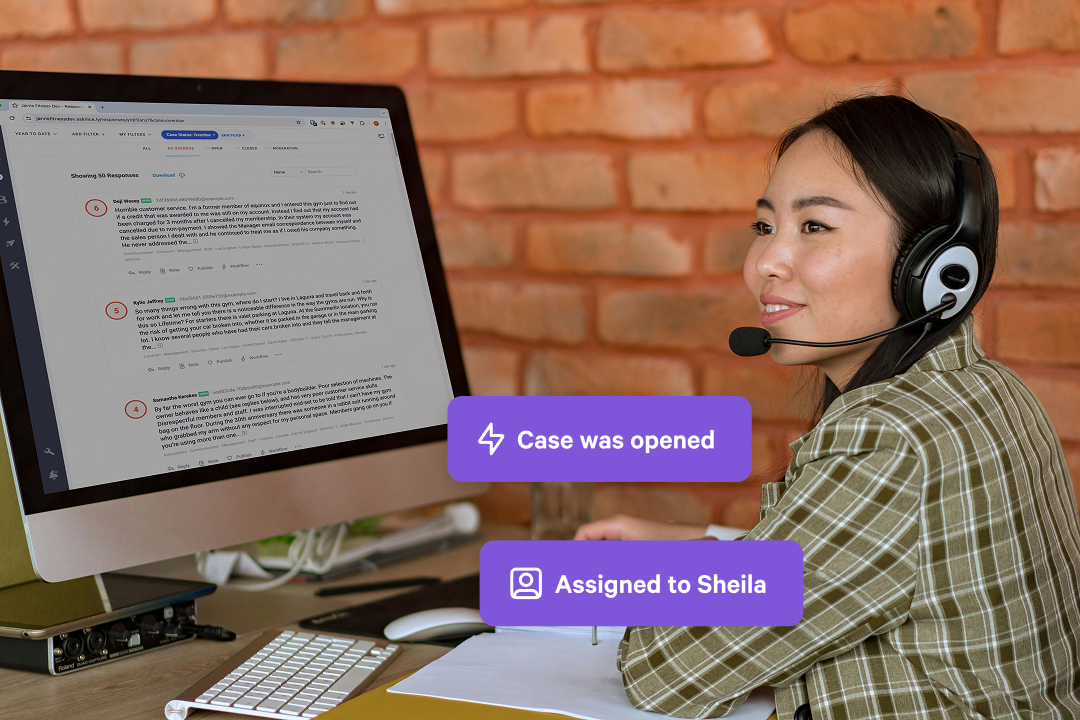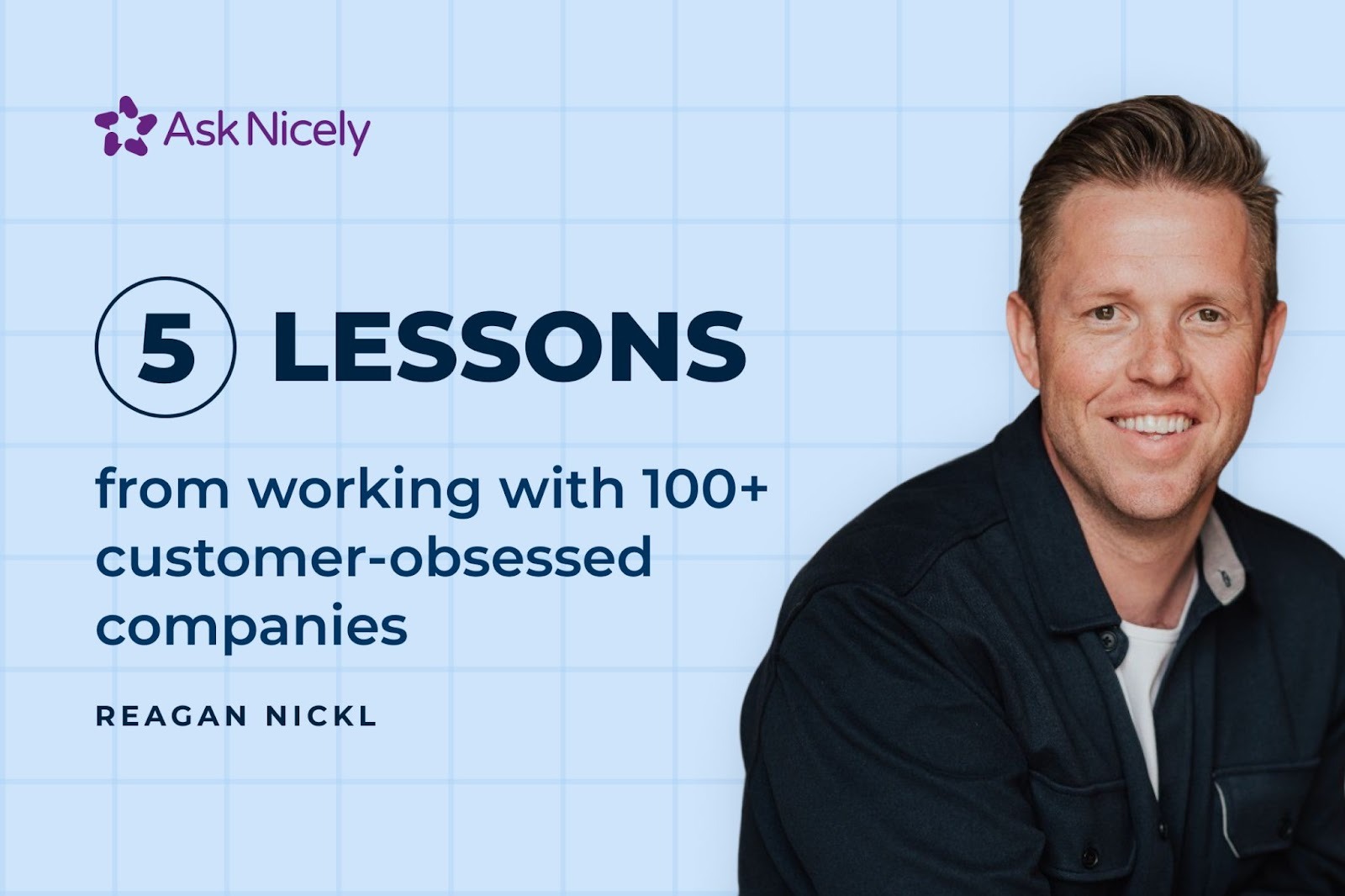
Every customer complaint tells a story and failing to recognize that story can be costly. A study by Coveo shows that nearly 56% of customers who experience a service failure never speak up, quietly churning and leaving companies wondering why loyalty is slipping. Meanwhile, companies that respond promptly to complaints can recover up to 95% of at-risk customers and turn frustration into advocacy.
So, how can businesses build a complaint management process that not only resolves issues quickly but also transforms negative feedback into opportunities for loyalty and growth?
And beyond that, how can you shift from a reactive system to a proactive approach, where potential issues are identified and addressed before customers even feel the need to complain?
The real challenge isn’t just listening to complaints, it’s empowering frontline teams to act on feedback fast. By harnessing real-time insights and closing the loop with customers quickly, companies can reduce service complaints, strengthen trust, and enable frontline teams to make meaningful improvements every day.
Let’s explore why complaints happen, how real-time feedback transforms resolution, and practical strategies to close the loop quickly and effectively. You’ll see how leading organizations turn insights into action, reducing complaints while building loyalty that drives long-term growth.
While we may view complaints as setbacks in the moment, they are in fact opportunities in disguise. Studies show that 70% of complaining customers will return if you resolve their issue well, jumping to 95% with immediate resolution. That’s a big opportunity to turn unhappy customers into potential loyal fans.
Of course the goal for any service brand is to reduce the number of complaints they receive. But to do that effectively, organizations need to listen, analyze, and act on the feedback they get.
Complaints reveal:
Complaints are also a leading indicator of loyalty and revenue impact. Companies that track and analyze complaints in real time can reduce churn, improve retention, and ultimately increase customer lifetime value. Ignoring them, however, risks silent churn, customers who leave without telling you why, making the cost of inaction far higher than the visible complaints themselves.
The first step to reducing service complaints is to start collecting real-time customer feedback.
We’re not talking about traditional surveys or periodic reporting here, those methods capture insights too late, after frustration has already taken root. Real-time feedback gives you an immediate window into the customer experience, letting you spot issues as they happen and respond before they escalate.
Companies leveraging real-time feedback gain several advantages when it comes to reducing complaints:
Essentially, real-time feedback empowers organizations to act before complaints escalate. It’s less about putting out customer fires, and more about preventing them from sparking in the first place.
Getting started with real-time feedback doesn’t have to be complicated. Begin by identifying key touchpoints in the customer journey where issues are most likely to arise, for example, after a service call, a product delivery, or an in-store interaction.
Next, implement tools that make it easy for customers to share their experience immediately, such as quick in-app prompts, SMS surveys, or post-interaction feedback buttons.
Equally important is ensuring that this feedback flows directly to the teams who can act on it, so complaints aren’t just collected, they’re resolved. By embedding real-time feedback into everyday operations, companies can spot trends early, respond faster, and continuously improve the customer experience before minor issues become major problems.
Get started with real-time feedback collection
Collecting feedback is only half the battle. Closing the loop (responding to customer concerns quickly and meaningfully) is what drives real impact. Companies that fail to follow up risk leaving complaints unresolved, eroding trust, and allowing issues to escalate into repeat problems or negative word-of-mouth.
Timely follow-up has measurable benefits: organizations that respond effectively to complaints can recover up to 95% of at-risk customers. Beyond retention, follow-up demonstrates that your business values customer voices, which fosters loyalty and advocacy.
Customer experience happens at the frontline. Whether it’s a support agent, store associate, or service technician, these employees are the first to encounter issues and the first to have the opportunity to resolve them. Giving frontline teams visibility into feedback and the autonomy to act is critical for reducing complaints and increasing loyalty.
As Reagan Nickl says:
“Customer feedback is only valuable if it reaches the people who can act on it. Too often, I see it trapped in spreadsheets or quarterly reports, and by the time it reaches the frontline, the moment to make a difference has passed. When feedback is accessible, teams take ownership. They start spotting patterns, taking initiative, celebrating wins, and addressing issues on the fly, without waiting for a manager to filter it down.”
Read more CX lessons from Reagan below 👇

Psst: AskNicely bridge insights and action by giving frontline employees real-time feedback dashboards, automated alerts, and follow-up workflows. This combination ensures that complaints are not just reported, they’re resolved, creating a direct link between employee action and improved customer experience.
Reducing service complaints is only meaningful if you can measure the impact. Tracking the right metrics ensures that your efforts in real-time feedback and follow-up translate into tangible business outcomes.
Key metrics to monitor include:
First Commonwealth Federal Credit Union demonstrates the true power of turning feedback into action. Using AskNicely, they were able to capture meaningful, real-time feedback from members and deliver it directly to the frontline teams who could make a difference. This approach allowed First Commonwealth to identify service gaps, provide coaching, and reward employees for exceptional member experiences.
Over just five months, their NPS jumped 11 points to over 70, and members began sharing detailed testimonials, effectively “love letters” praising the credit union’s service. These insights not only helped the organization address potential issues before they escalated, but also created a blueprint for coaching and continuous improvement.
As Damaris Sirop, VP Director of Member Experience, notes:
“AskNicely has helped us understand members' perspective of their experience. We can now coach and develop our teams to excel at service delivery, based on what actually matters to our members.”
By turning complaints into actionable feedback and celebrating successes, First Commonwealth reduced member churn, strengthened loyalty, and created a cycle where exceptional experiences fuel advocacy, referrals, and long-term growth.
Collecting feedback and tracking complaints is only effective when insights lead to action. AskNicely combines real-time feedback, automated AI-enabled follow-up workflows, and frontline empowerment tools to close the loop quickly and systematically.
By combining technology and process, AskNicely turns complaints from abstract data points into actionable insights that drive loyalty, reduce churn, and improve long-term business outcomes.
Curious? Book a demo today.